A milk blister can be painful and obstruct breastfeeding. What causes milk blebs and clogged milk ducts? Yeast infections, poor latching and breastfeeding techniques, pumping friction, teething and blocked ducts are all causes. Here are pictures and how to treat and get rid of nipple blisters from breastfeeding.
What is a milk blister or a milk bleb on nipple?
A milk blister (also referred to as a milk bleb or a blocked nipple pore) is usually just “milk under your skin.” It usually appears when a small piece of skin on the areola grows over a milk pore or duct and causes your milk to back up and blister.
The blister is usually painful white, clear or yellow and appears as a dot on your nipple. The bleb only seems to cover one nipple opening or pore. It can be very painful to the touch and while breastfeeding or pumping.
Milk blebs from poor latch and friction
A milk bleb is not to be confused with a blister on the nipple caused by friction. This type of blister which may sometimes be a red or brown “blood blister,” can be caused by friction from baby’s improper latch or sucking or from the use of a badly fitting nipple shield or pump.
A white spot on the nipple may also be caused by an obstruction within the milk duct (as opposed to skin covering the milk duct). The obstruction might be a tiny, dry clump of hardened milk or a “string” of fattier, semi-solidified milk.
The first type of milk duct obstruction will often pop out from the pressure of nursing or manual expression, or can be gently scraped from the surface of the milk duct with a fingernail.
The second type can often be manually expressed from the milk duct; reducing saturated fats can help to prevent recurrence of this type of obstruction. Both of these types of milk duct obstruction are associated with recurrent mastitis.
What Causes Milk Blisters?
Milk blebs and blisters are thought to be caused by milk within a milk duct that has been sealed over by the epidermis and has triggered an inflammatory response.
The elementary cause of a blister on areola when nursing may be superfluity of milk, excessive pressure on that area of the breast, or the other usual causes of plugged ducts. Latch, suck, and or tongue problems may contribute to blisters because of friction on the tip of the nipple.
1. Yeast infections and thrush
Is it a milk blister or thrush? Could it be herpes? Thrush (yeast), can also cause milk blisters. Thrush occasionally appears as tiny white spots on the nipple, but can also appear as larger white spots that block one or more milk ducts. If you have more than one blister at the same time, thrush could be the prime cause.
Yeast is often accompanied by a “burning” sensation, and the pain tends to be worse after nursing or pumping (whereas a plugged duct generally feels better after the breast has been emptied).
2. Clogged, plugged or blocked milk duct
When breastfeeding, a blocked milk duct can make nursing very painful. According to Baby Center, plugged or clogged milk ducts are risky as they can lead to mastitis. But what is a blocked milk duct during breastfeeding?
Kelly Mom website describes it as an “an area of the breast where milk flow is obstructed. The nipple pore may be blocked or the obstruction may be further back in the ductal system.”
Incorrect latch and positioning, clogged nipple pore (by dried milk, clogged milk duct, milk composition (too thick and fatty hind milk) are all said to be the leading causes of milk blisters in pregnant and nursing women.
3. Milk blister on areola from pumping
The nipple and areola are the most affected with milk blebs, pimples and blisters. The main reason for these is badly fitted nipple shields or, if you are exclusively pumping, poor use of the pump. According to Livestrong, pumping breast milk usually causes “friction blisters on nipples and usually develops in response to incorrect positioning of the breast pump.”
4. White nipple blister from teething baby
Sore nipples or breast irritation often occurs when breastfeeding a teething baby. It is easy for your nipple to crack or form a blister due to trauma from the baby’s new teeth.
To prevent blebs and white blisters on your nipples, soothe your baby’s gums with a frozen cloth or teething toys. Teething babies are fond of biting their mothers’ nipples because they are trying to relieve the discomfort on their gums.
5. Breastfeeding milk blister
Poor breastfeeding techniques, latch or attachment is likely to cause you to get a blister on the nipple. Other than getting a breastfeeding milk blister, the following symptoms and signs point to poor latching or attachment technique.
- Restless baby
- Sore nipples
- Engorged breasts due to milk being left in the breasts
- A clicking sound when nursing
Other Symptoms of Milk Blebs and Nipple Blisters
Sometimes, it is possible to get a blister on your nipples and breast area even after weaning (after stopping breastfeeding).
It is easy to confuse it with something else such as herpes bumps. This often occurs within the first month of stopping nursing. In severe cases, see a doctor, especially if you see symptoms such as the following:
- Blisters and pain in breast
- Fever that accompanies the lesions
- If the blister bursts or pops and won’t stop bleeding
- Pus or discharge (usually yellow or green), similar to that of an infected pore on breast.
- Itchy breasts with painless lumps around nipples
- If the blister won’t heal or won’t go away for weeks or months and keeps coming back
- If the growths are getting bigger
- If there’s a scab on nipple or a bump that doesn’t hurt
Do Milk Blisters Bleed?
Cracked broken nipples and nipple blisters can cause blood in breast milk. This does not entirely mean that the milk blister bled, it only means that the blister caused the skin on the breast/ areola to crack up, hence the bleeding.
Finding blood in breast milk is nothing to worry about; it’s actually very common, especially in first time breastfeeding moms.
The blood cannot harm your baby since the blood consumed will pass through your baby’s digestive tract, as a bowel movement, therefore, you can continue to breastfeed.
Baby Milk Lip Blister on Gums, Lips
Baby lip blister is a common problem found in the babies, especially those who feed on mother’s milk continuously. Although feeding is something that should not be stopped, however, these blisters should also be kept in check as they may become severe if not attended on time.
Most of the mothers tend to ignore these baby lip blister thinking that they are just another kind of common rash that will go away. Of course most of the blisters formed on the baby’s lips are not severe and tend to go away with time, yet one should not ignore the possibility of it being something more severe than what is being perceived.
Milk Blister Treatment
There are various treatments and home remedies that can be used to get rid of a milk bleb or blister. While in most cases, home care and practices can help heal and remove the lesion, you should see a doctor for proper treatment. Here are the options to consider.
Antibiotics
In case of a bacterial infection, your doctor will recommend an antibiotic to help clear the infection. This is common if the blister turned yellow or green. These colors indicate an infection in the nipple. Treatment must be sought to prevent passing the infection to the baby.
Topical antibiotics are only prescribed if you are not breastfeeding. During breastfeeding, your doctor might give oral antibiotics.
Prevent infection by using a double antibiotic ointment. If you think that the blister might be infected, or right after a bleb opens up, use a double antibiotic ointment (that does not contain neomycin, which causes skin irritation in some people) on the affected area.
Use a small amount, just enough to cover the area, and apply after feedings. The ointment does not need to be washed off before the next feeding, and it is safe for your baby to ingest the very small amount that will remain when he next nurses.
Use essential oil to get rid of a milk blister naturally
A clogged milk duct can also be treated at home with a home remedy using essential oil. Here’s how:
- Take a warm or hot shower first.
- Massage the breast area as you shower to help unclog the ducts.
- Mix your body oil with 1 tablespoon of essential oil.
- Massage the nipple are with the oils to soften it.
- Allow about 30 minutes and then rinse.
- Nurse using the right technique.
Summary: Products that support treating milk blisters at home
| IMAGE | PRODUCT | DETAILS | |
|---|---|---|---|
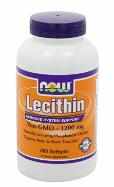 |
|
Check price | |
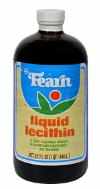 |
|
Check price | |
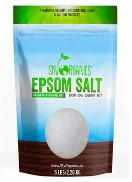 |
|
Check price | |
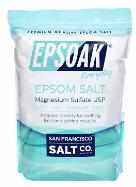 |
|
Check price | |
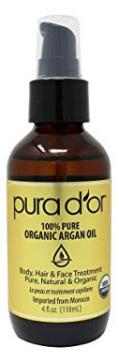 |
|
Check price |
Sunflower or soy lecithin cure
Lecithin is known to prevent milk from thickening or becoming sticky. Sticky milk causes clogged ducts and thinning your milk can stop and get rid of a plugged duct. This remedy is recommended if you are prone to blocked ducts when breastfeeding.
If you are using soy lecithin, “The dose is 1 tablespoon, 3-4 times/day; or 1 capsule (1,200 milligrams each), 3 to 4 times/day.” [Pumpstation.com]. Our favourite is Lecithin from NOW Foods (Check price on Amazon)
If you prefer liquid form, Lecithin Fearn by Natural Foods would be a great choice
Suggested treatment for milk blisters usually consists of four steps: apply moist heat prior to nursing, clear the skin from the milk duct, nurse or pump with a hospital-grade pump, then follow up with medication to aid healing. You may need to repeat this for several days (or longer) until the plugged duct opening stays clear.
More comprehensive recommendations include:
- Firstly, you should do is take enough rest from breastfeeding. But you should not stop it entirely. If the baby doesn’t take the blister in the mouth then the breastfeeding can be continued. It may provide you relief from the pain.
- Application of moist heat to soften the blister prior to nursing. Several times per day, add a saline soak prior to applying the moist heat.
Epsom salt remedy
An Epsom-salt soak before breastfeeding helps to open the milk duct opening and also aids in treating and subsequent healing.
- Make a solution of Epsom salt by mixing 2 teaspoons with 1 cup water.
- First dissolve Epsom salt in a small amount of very hot water, and then further water is added to cool it down enough to soak in.
- Try to add this Epsom-salt soak to your routine at least 4 times per day.
- Prior to nursing (and directly after the Epsom-salt soak) place an extremely hot wet compress on the milk blister immediately before nursing or pumping. Be careful not to burn yourself.
- A cotton ball soaked with olive oil can be used to soften the skin in lieu of the wet compress.
What products do we reommend?
- Epsom Salt By Sky Organics – 100% Pure Magnesium Sulfate-Natural
- Epsoak Epsom Salt 5 lbs. Magnesium Sulfate
Other home remedies for clogged milk blisters
- Massaging is a good way relieving the pain. You can massage your breasts every day and it will help you in clearing out the milk ducts and will provide you relief.
- Loosen the milk stuck in the pore. If the bleb is being caused by milk which is stuck in a nipple pore, you can try applying vinegar to the area with a cotton ball over the nipple held inside your bra. Vinegar dissolves calcium, so it may help to loosen dried milk stuck in a nipple pore.
There also are traditional or natural remedies (home remedies) that are also quite as efficient. These include:
100% pure Argan oil
Argan oil is great at relieving milk blisters! This Moroccan plant oil is rich in Vitamin E and essential fatty acids, which is the lifeblood of healthy-looking skin. It is used to soften the blister skin and to heal the skin after the blister was gone. It softens, moisturizes, nourishes and antioxidizes skin.
Argan oil is very well absorbed. But when you apply it to the nipples, don’t forget to wipe it off before nursing.
How to Prevent a Milk Blister
Prevention as they say, is better than cure. It is often better to pre-empt the occurrence of something by providing early solutions than waiting for it to happen then have to not only treat it, but also endure the pains.
To prevent blisters on breast from happening, you need to eliminate all the potential causes (look at the list above). Work on the most common culprits first:
- Check your baby’s latch and positioning. Alternate positions to achieve different sucking angles.
- Look for a possible source of nipple injury. Check your sleepwear, bras, and breast pads. Eliminate the source.
- Clean your breasts after the feeding to remove milk remaining on the nipple. This prevents dried milk from clogging the pores.
- Do not ignore milk oversupply.
- Treat breast yeast infection fast.
Milk Blister Pictures
Because these blisters can easily be confused with other skin conditions, we have included a few images below for easy discernment.
This photo shows a breast with a milk bleb.
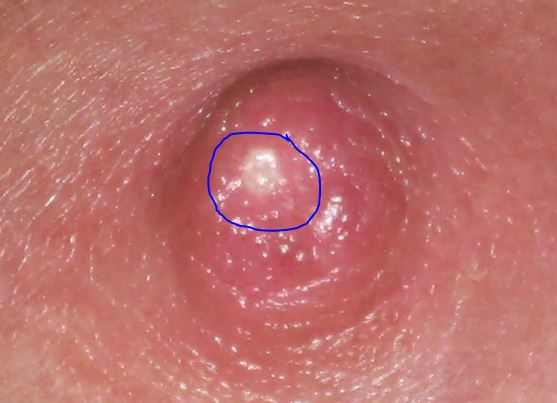
This picture depicts a newborn baby with milk blebs.
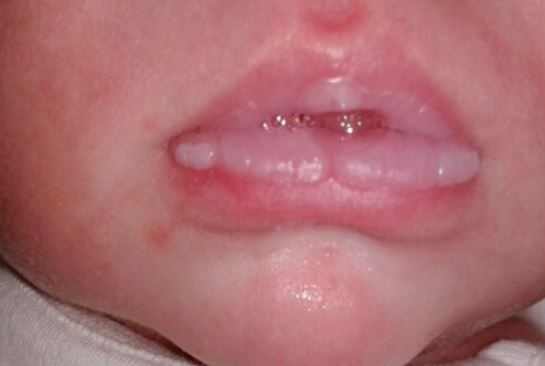
Sources and References
- KellyMom: How do I know if I have a plugged duct or mastitis?
- Baby Center: Clogged milk ducts causes and treatment
- Livestrong: How to Heal Blisters on the Breasts From Pumping
- Tesco Baby Club: Poor attachment during breastfeeding
- PumpStation: PLUGGED DUCTS & MASTITIS
- Mama Natural: Natural Remedy for a Clogged Milk Duct


